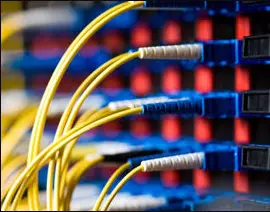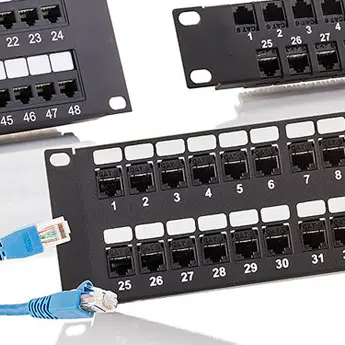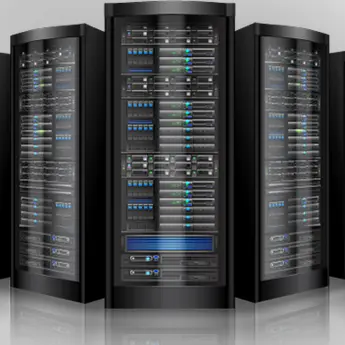Techlogiks Canada Inc. an ISO9001:2008 registered company is the global provider of passive networking components. We are committed to innovation and excellence bringing freshness to the networking industry. With our innovative product range and professional management, we offer the highest quality products that distinguish themselves from others with uncompromising performance and maximum reliability
Techlogiks Inc. is the global provider of passive networking components. We carry a complete line of network and fiber optics cables, connectors, patch panels, patch cords, cabling cabinets, tools and all related accessories. Techlogiks will offer you the highest quality products that distinguish themselves from others with uncompromising performance and maximum reliability at a competitive cost.
Techlogiks’ complete product catalog is available now in digital form. You can filp the pages by clicking on the corners. Just click over the page to zoom in and out. You can also use the right and left arrow keys on the navigation bar to turn the pages and print any page containing product specifications or download the pdf format of the complete catalogue.

Fiber
Single Mode cable/Adaptors
Multi Mode Cable /Adaptors

Cat Cables
Cat 6 Cables
Cat 6A Cables
Cat 7 Cables

Cabinets / Racks
Free Standing Cabinets
Wall Mount Cabinets
ITU-T recommendations:
- ITU-T G.650.1 and G.650.2 – definitions and test methods for linear, deterministic attributes of single-mode fibers and cables,
- ITU-T G.651.1 – characteristics of a 50/125 µm multimode graded index optical fiber cable,
- ITU-T G.652 – characteristics of a single-mode optical fiber and cable (9/125 μm, four versions: A, B, C, D),
- ITU-T G.653 – characteristics of a dispersion shifted single-mode optical fiber and cable (DS-SMF),
- ITU-T G.654 – characteristics of cut-off shifted single-mode optical fiber and cable (CS-SMF),
- ITU-T G.655 – characteristics of non-zero dispersion shifted single-mode optical fiber and cable (NZDS-SMF),
- ITU-T G.656 – characteristics of a fiber and cable with Non-Zero Dispersion for Wideband Optical Transport,
- ITU-T G.657 – characteristics of a bending loss insensitive single mode optical fiber and cable for the access network.
ISO/IEC standards:
- IEC 60793 parameters of optical fibers and cables:
- IEC 60793-2-10 – applicable to multimode optical fiber types A1a, A1b, and A1d,
- IEC 60793-2-50 – applicable to single-mode 9/125 optical fiber types B1.1, B1.2, B1.3, B2, B4, B5,
- IEC 60794-2 – requirements for indoor cables,
- IEC 60794-3 – requirements for outdoor cables
- ISO/IEC 11801 – specifies general-purpose telecommunication cabling systems (structured cabling), including several classes of optical fiber interconnections (OM1 – OM4, with specified minimum modal bandwidth at 850 nm, and OS1, with attenuation max 1 dB/km),
- TIA/EIA-568, the Telecommunications Industry Association standard for telecommunications cabling in commercial premises.
One of the major differences between Category 5e and the newer Category 6 (Cat6) is in transmission performance. While Cat5e cables can handle Gigabit Ethernet speeds, Cat6 cables are certified to handle Gigabit Ethernet with a bandwidth of up to 250 MHz. Cat6 cables have several improvements, including better insulation and thinner wires. These improvements provide a higher signal-to-noise ratio, and are better suited for environments in which there may be higher electromagnetic interference. Cat6 cables are available in shielded twisted pair (STP) forms or UTP forms. Cat6 cable is also backward-compatible with Cat5 and 5e cables.
Category 6a cable, or augmented Category 6 cable, improves upon the basic Cat6 cable by allowing 10,000 Mbps data transmission rates and effectively doubling the maximum bandwidth to 500 MHz. Category 6A performs at improved specifications, in particular in the area of alien crosstalk as compared to Cat 6 UTP (unshielded twisted pair), which exhibited high alien noise in high frequencies
Category 7 cable (Cat7), also known as Class F, is a fully shielded cable that supports speeds of up to 10 Gbps (10,000 Mbps) and bandwidths of up to 600 MHz. Cat7 cables consist of a screened, shielded twisted pair (SSTP) of wires, and the layers of insulation and shielding contained within them are even more extensive than that of Cat6 cables. Because of this shielding, they are thicker, bulkier, and are more difficult to bend. Additionally, each of the shielding layers must be grounded, or else performance may be reduced to the point that there is no improvement over Cat6. In fact, performance may be even worse than Cat5. For this reason, it is very important to understand the type of connectors at the ends of a Cat7 cable.
Fiber-optic communication is a method of transmitting information from one place to another by sending pulses of light through an optical fiber. Due to much lower attenuation and interference, optical fiber has large advantages over existing copper wire in long-distance and high-demand applications.
An optical fiber consists of a core, cladding, and a buffer (a protective outer coating), in which the cladding guides the light along the core by using the method of total internal reflection. The core and the cladding (which has a lower-refractive-index) are usually made of high-quality silica glass, although they can both be made of plastic as well. Connecting two optical fibers is done by fusion splicing or mechanical splicing and requires special skills and interconnection technology due to the microscopic precision required to align the fiber cores.
Two main types of optical fiber used in optic communications include multi-mode optical fibers and single-mode optical fibers. A multi-mode optical fiber has a larger core (≥ 50 micrometers), allowing less precise, cheaper transmitters and receivers to connect to it as well as cheaper connectors. However, a multi-mode fiber introduces multimode distortion, which often limits the bandwidth and length of the link. Furthermore, because of its higher dopant content, multi-mode fibers are usually expensive and exhibit higher attenuation. The core of a single-mode fiber is smaller (<10 micrometers) and requires more expensive components and interconnection methods, but allows much longer, higher-performance links.
Single mode fiber is categorised into OS1 and OS2. OS1 and multimode fiber is usually divided into OM1, OM2, OM3 and OM4.
Certification
